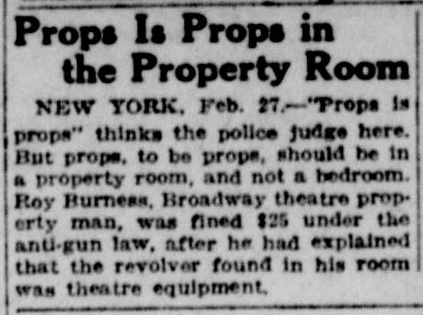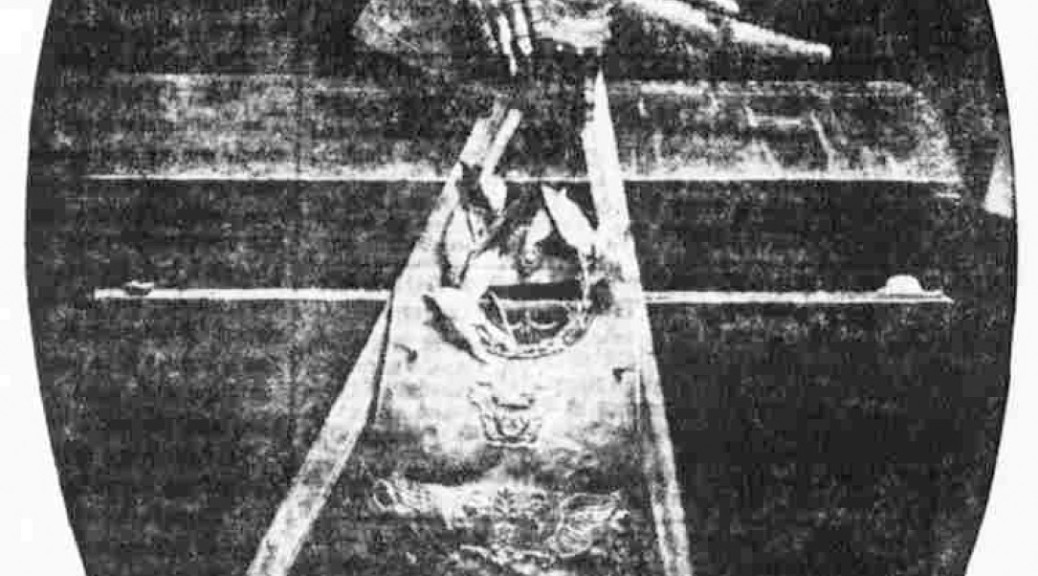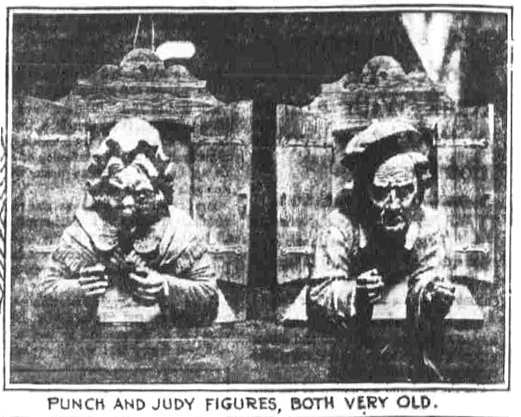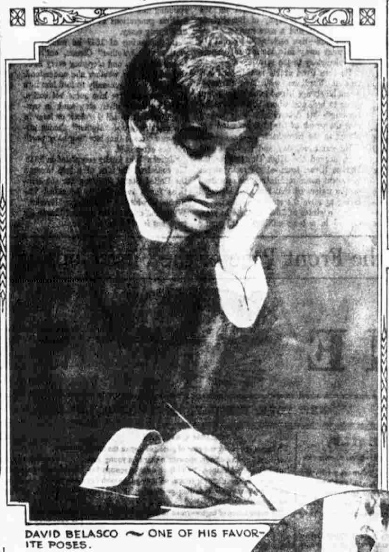The following is the third part of a 1920 article on David Belasco’s property collection. The first part and second part were published earlier:
Oddities From the Orient
by Frank Vreeland
Near a Mexican guitar used in “The Rose of the Rancho” and a moon harp played in “The Darling of the Gods” hangs a pair of Chinese torture pliers which were originally intended for use in “The Son-Daughter” and which look like a pair of exaggerated lemon squeezers. Buddhist bronzes and Japanese tea sets of valuable teak wood are mingled with Oriental steel mirrors bought in a New York department store. Beneath a large part of the ceiling spreads the spokes of a large wheel from a loom that is 150 years old and casts its shadow on a set of telephone books from “The Woman,” which Property Chief Purcell remarks drily “are being kept as a souvenir of the day when you could get your call.
“And besides,” he adds with a twinkle, “they’ll be handy if the ghost of one of the men in the cast who died wants to look up a number.”
The room is especially prolific in swords. A bushel of them are rammed into a high vase in one corner, and the room sprouts them elsewhere—Roman swords, old English sabres, heavy five foot blades swung in the Crusades, and an ancient English executioner’s axe, which Mr. Purcell exhibited as a very efficient means of promoting the acquaintance of ancestors with their descendants.
A cabinet with one of the most interesting arrays in the whole exhibition—which is ticketed and catalogued, by the way—is that containing the bed quilts of the epoch when they used the bed warmers on view in one corner and didn’t depend on the janitor for heat. There are comforters and counterpanes with the sort of zigzag designs and chromatic convulsions that would warm a cubist’s heart, let alone his feet. Some of them are beautiful even from a modern standpoint, however, and those that are ugly are none the less valuable, like the Paisley shawls, of which Mr. Belasco has his fair share. Many of these coverlets were bought by Mr. Belasco without any intention of applying them to the A. H. Woods kind of production, simply being purchased as part of the entire contents of Gen. Braddock’s house in Washington, which Mr. Belasco snapped up as part of his unending campaign to equip himself with a full line of antiques.
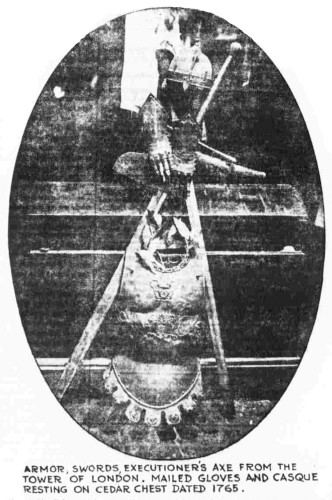
Original Publication: Vreeland, Frank. “Belasco’s Property Room Houses Antique Gems.†The Sun and New York Herald 1 Feb. 1920, Sunday Magazine Section sec.: 7. Print.
